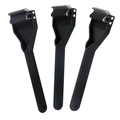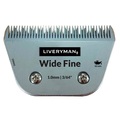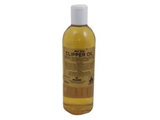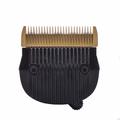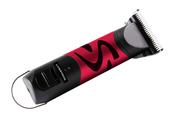As we come into winter, you will probably find that your horse's coat needs clipping. When a horse is worked with a full coat, it gets uncomfortably warm, sweats more and takes longer to dry after exercise. Depending on the breed of horse and the thickness of its coat, you may well need to clip him fairly often! For safe and effective clipping, follow our top tips and let us know if you have any of your own:
- Before you start, make sure your clippers are in good condition; regular servicing and a thorough cleaning after every use will keep them going for longer. Remove hair, apply grease or clipper oil to the gears, and check the cable isn't damaged. It can be very embarrassing riding out on a half-clipped horse, not to mention the cost associated with either fixing your clippers or buying new ones.
- Before using your clippers, let them run so your horse quickly gets used to the noise. To accustom your horse to the feel, place the clippers on top of your hand so he can feel the vibrations beneath your skin. Plait the mane and use a tail bandage to prevent these hairs from getting caught up in the clipper.
- Clipping can be dangerous, especially when you are using mains powered clippers. You really don't want your horse treading on the cable, just as much as you don't want your horse kicking you! Choose your location carefully and be aware of the dangers.
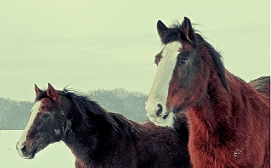
- If you find it tricky getting an even clip on both sides then use dampened chalk to mark out your clip before you start. This will give you a good guideline to follow. If you get it wrong, simply rub out the chalk and try again!
- For a nice equal and straight line on a blanket clip dangle some string down either side of the withers so that you can draw the line more easily with your damp chalk.
- Ensure your blades are nice and sharp as this will help prevent tram lines and little nicks. When clipping difficult areas e.g. behind the elbow, hold the skin taught to avoid catching the skin. Ask someone to help you if you can't manage doing both.
- Tram lines can also be prevented by clipping a horse that is warm. Ideally, rug your horse up before you clip as this makes the hairs lie flat against the skin. Make sure you always clip against the direction of hair growth using long, continuous strokes.
- Don't leave the tricky parts until the end! It is often tempting to do this, but aim to tackle them fairly early on to make the rest of the clip run smoothly.
For more info and advice on clipping, feel free to comment below or email me directly: [email protected].

Written by: Verity




